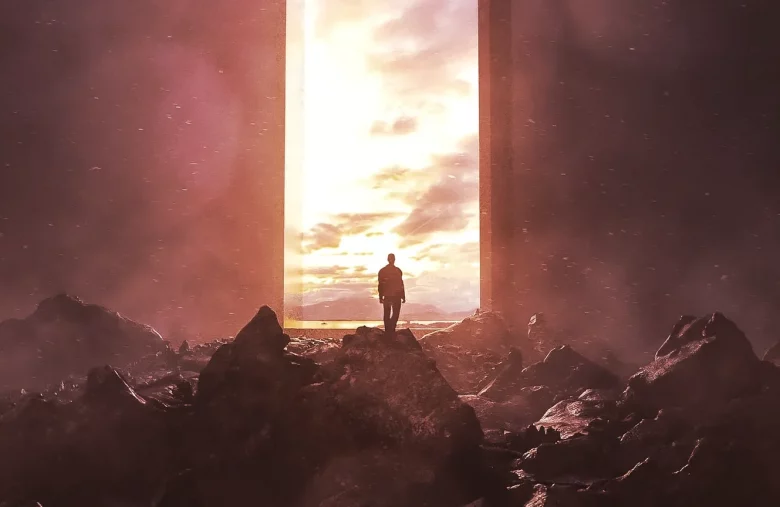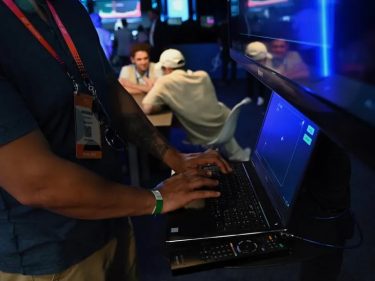Open Metaverse Alliance Says It Won’t Let Meta Define the Future of the Internet

With Dapper Labs and The Sandbox among its ranks, OMA3 opens up membership amid push for an interoperable Web3 world.
In brief
- The Open Metaverse Alliance officially launched today and opened membership to Web3 builders.
- The association—which includes members like Dapper Labs—is pushing for an interoperable, blockchain-powered metaverse.
Whether the future metaverse will be open and interoperable—and whether it will be primarily built with blockchain technology—remains to be seen. That’s why an array of crypto builders and firms formed the Open Metaverse Alliance (OMA3) to provide Web3 creators a united front in developing standards to help push the immersive future internet in that direction.
First revealed in July, OMA3 officially opened up shop today, as announced at the Web Summit in Lisbon. The association has launched memberships across two tiers—sponsor or creator—and established working groups to begin developing standards between metaverse platforms, exploring legal protections in Web3, and more.
“We share the same belief of the importance that the metaverse remains open and becomes truly user-owned—and that there are very fundamental things that need to be solved across multiple platforms and agreed upon to create this vision,” Batis Samadian, co-founder of metaverse commerce platform Space, told Decrypt.
OMA3 already includes a number of prominent members, including metaverse investor Animoca Brands, NBA Top Shot and Flow blockchain creator Dapper Labs, and the respective entities behind the Web3 games The Sandbox, Decentraland, Alien Worlds, and Upland.
The consortium has launched a working group to devise interoperability standards, for example, which will let users move their interactive NFT assets—for things like avatars, virtual land, and items—between multiple Web3 metaverse platforms. It will also explore intellectual property rights and other legal protections across decentralized online worlds.
OMA3 founding members tell us that the association—which will be governed by a DAO, or decentralized autonomous organization—has been in the works since 2021.
However, OMA3 members also described its current form as being a response to the Metaverse Standards Forum (MSF), an association that was announced in June by a group of 35 tech firms that have similarly committed to building an open metaverse in which users can bring their assets across various future online platforms.
Meta, Microsoft, Epic Games, and Adobe are among the Web2 and tech giants that started the MSF. But many in the Web3 space doubt that those firms plan to build a user-owned metaverse in which NFT assets can be freely carried between platforms. None of the OMA3 member companies were invited to join the MSF, The Sandbox co-founder Sebastien Borget told us.
“Everything which touches blockchain, and everything which touches tokenization and smart contracts, we did not see represented in the MSF,” explained Dirk Lueth, co-founder and co-CEO of Web3 metaverse real estate game Upland. “They’re working on a different technology foundation.”
Battle for the metaverse
Tensions over how the metaverse should be built aren’t new. As Facebook signaled its ambitions for the metaverse ahead of last year’s big showcase and company rebranding to Meta, Animoca Brands co-founder Yat Siu told us that Facebook and Chinese firm Tencent were “a threat” to an open metaverse.
The metaverse refers to an immersive version of the internet that will be navigated with 3D avatars. Many believe that the metaverse will be used for various activities, whether it’s socializing, playing games, working, or shopping. Web3 advocates envision an open metaverse in which NFT apparel, items, artwork, and more can be moved between platforms.
In recent months, Meta has espoused a similar message of building in the open and letting users bring their avatars and assets between platforms. But it has still yet to say whether it will use Web3 technology—beyond letting users share owned NFTs on Facebook and Instagram—and instead has pointed to partnerships with Microsoft and others to support API plug-ins that let users take such assets to supported platforms.
Whether Meta’s metaverse play will be centralized—which many assume it will be—remains an open question and key point of contention. But the fact that the company is putting more and more emphasis on open ecosystem messaging is good news in the eyes of OMA3 members. They think the point is getting across to Mark Zuckerberg and company.
“If you look closely at how Facebook/Meta has been communicating over the past year, the narrative is evolving,” Borget told us. “I think we’re influencing [them] somehow.”
From Web2 to Web3
While some Web3 builders have seen Meta as an antagonist or a “threat,” in the words of Animoca’s Siu, the OMA3 founders told us that they hope to work alongside the social media juggernaut to develop a metaverse format that everyone can plug into.
They described a tough transition ahead for companies used to building “walled gardens,” or closed ecosystems. Saro McKenna, co-founder of WAX-based Web3 game Alien Worlds, pointed to Facebook’s past history of developing widely-used open-source tools like GraphQL, and described a potential “journey” ahead as tech giants shift back to open development.
“We hope to go on that journey with Meta and all other Web2 platforms that are contemplating how to become ready, really, for the Web3 internet,” she said. “The purpose of OMA3 is to be able to work with incumbents, and of course, to foster all of the grassroots innovation that’s happening in the Web3 space. Both of those things are important.”
McKenna believes that there’s growing consensus among users that open platforms are the way of the future, and that such momentum may nudge Meta and others in that direction. Marja Konttinen, Marketing Director at the Decentraland Foundation, also pointed to potential regulatory pressure from the European Union regarding a truly open metaverse.
“If the EU is already listening, then I think we have their ear. This is a very important time for us to be very loud and vocal, and collaborate on that story, so we can show different options,” said Konttinen. “We’re not tied to our history; we can also be future-gazing. It helps to have friends when doing that.”



